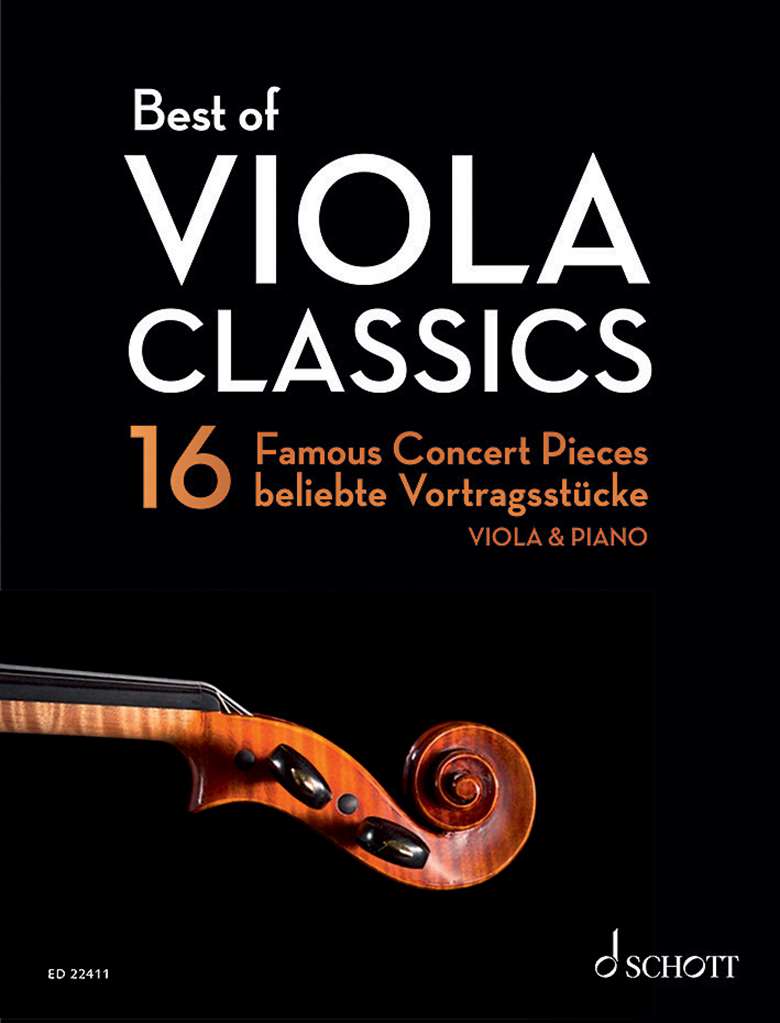Reviews: Best of Viola Classics
Vanessa Gaidoni
Sunday, October 1, 2023
Vanessa Gaidoni reviews Best of Viola Classics and assesses its suitability for your students.

I am often slightly dubious of ‘viola albums’. In many cases they can be made up of pieces that are transcribed from other instruments, without much thought given to the full range of the viola; they frequently ignore the lower register and sit uncomfortably on the instrument. Thankfully, Best of Viola Classics is not one of those volumes.
It is a collection of 16 pieces that have been selected with the viola very much in mind. The works are arranged chronologically. Some are already firmly rooted in the viola repertoire, others are welcome, if less familiar, additions. I can see myself using each of these pieces with one or other of my pupils. They all showcase various aspects of the viola’s versatility, exploring its warm, resonant and expressive tone.
The music is printed on cream paper, which I always find easier on the eyes. The viola part is clean, uncluttered and agreeably spaced, allowing for easy reading. The suggested fingerings and bowings give a good potential starting point for students or teachers to work from, before exploring other options and settling on their own personal edition.
There is a small note in the bottom left corner of the first page of each piece to indicate where it is from, including if from a larger work. This is helpful in tracking down recordings should you wish to find and listen to the work or explore other movements where only one is included. There is good use of the alto clef, only using the treble when it is needed. The clef changes are mainly in appropriate places that don’t interfere with the flow when reading.
The complete Sonata in B-flat major (largo-allegro-largovivace) by the viola’s original champion, Telemann, opens the collection. This is followed by a Boccherini Minuetto.
Moving into the classical period, there are pieces by Hummel and Schumann. The Hummel is the substantial first movement from his Viola Sonata in E-flat, Op.5 No.3, lasting over 10 minutes. This is a terrific sonata full of thematic dialogue to keep both pianist and violist on their toes and working together. This is followed by two movements (third and fourth) from Schumann’s Märchenbilder which contrast each other beautifully. The third (Rasch) is fiery and unrelenting, whereas No.4 is calm and lilting, giving space to explore the softer side of the viola’s timbre. I would argue that No.3 is more demanding than the suggested Grade 6 to 7; often students will wait until conservatoire level to tackle this piece successfully.
I find that students never need much encouragement to explore the Romantic and contemporary repertoire. The second half of this collection is stuffed with beautiful lyrical melodies, making full use of the lower register. The Romances (Nos.2 and 3) by Friedrich Kiel are viola pieces through and through, as is the Rubinstein Salon Piece (No.2); they all capture the character of the viola beautifully using a wide spectrum of notes and dynamics in dialogue with the piano. These works would be a good forerunner to tackling the Brahms sonatas.
The Andante by Emanuele Muzio was unfamiliar to me; it has been fun to explore. Muzio – having written mainly operas and being Verdi’s only pupil – has packed the piece full of drama and emotion. It’s a great addition, especially if you have an adept pianist to hand.
The next three pieces were my personal favourites: Hebräische Melodie (Nos.1 and 2) by Joseph Joachim, the Hebrew melodies working so well on the viola (soulful, warm and rich – the perfect combination); and Legende No.1 by Herzogenberg, a piece dedicated to Joachim and equally beautiful.
The wonderful Fantasy Piece by Robert Fuchs and Album Leave by Tanejev bring us into the 20th century. It is great, too, to see a female composer included; a fun Scherzo by Johanna Senfter would be great for someone putting together an all-female programme. Paso doble by Volker David Kirchner is for anyone looking to tackle something more contemporary or a memorable encore (even with the slightly odd sextuplet).
Apart from a minor typo on the back cover of the book referring to ‘many years of his or her violin lessons’, there’s very little that’s negative about this collection. It’s a welcome addition to the violist’s library and I look forward to exploring it further with my pupils.

